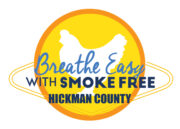Tobacco-Free Kids
Future free of the death and disease caused by tobacco.
Tobacco has killed enough!
For more than 20 years, the Campaign for Tobacco-Free Kids has fought to protect children and save lives from the #1 cause of preventable death: tobacco use. Our vision is a future free of the death and disease caused by tobacco.
The Campaign for Tobacco-Free Kids and the Tobacco-Free Kids Action Fund are the leading advocacy organizations working to reduce tobacco use and its deadly consequences in the United States and around the world. The Campaign for Tobacco-Free Kids is a 501(c)(3) nonprofit organization. The Tobacco-Free Kids Action Fun is a 501(c)(4) nonprofit organization separate from, but affiliated with, the Campaign for Tobacco-Free Kids.
Through strategic communications and policy advocacy campaigns, the Campaign for Tobacco-Free Kids and the Tobacco-Free Kids Action Fund work to change public attitudes about tobacco and promote proven policies that are most effective at reducing tobacco use and save the most lives. The two organizations work closely together to achieve the greatest impact.
We are passionate and experienced public health advocates with a more than 20-year track record of leading and supporting successful policy advocacy campaigns:
- In the United States, we work at the national, state and local levels.
- Around the world, we are active in low- and middle-income countries facing the greatest threat from tobacco.
- In addition to our work fighting tobacco use, our Global Health Advocacy Incubator applies our broad range of advocacy experience to supporting civil society organizations working to address other critical public health challenges.
We’re making incredible progress against tobacco:
- In the U.S., our work has helped drive smoking rates to record lows.
- Around the world, we’re helping to turn the tide of a global tobacco epidemic that would otherwise kill one billion people this century.


But the battle against tobacco is far from over:
- Tobacco still kills nearly half a million Americans and more than 8 million people worldwide each year.
- The tobacco industry relentlessly peddles its deadly products, targeting kids and other vulnerable populations.
- Youth e-cigarette use in the United States has skyrocketed to what the U.S. Surgeon General and the FDA have called “epidemic” levels.

Campaigns and Resolutions for Tobacco-Free Kids
Electronic Cigarettes Should be Included in Smoke Free Laws
Smoke-free laws that protect everyone’s right to breathe clean air in most workplaces and public places now cover a majority of the U.S. population. These laws have been a huge public health success — implemented with ease and high compliance, improving health and saving health care dollars. They not only protect Americans from the thousands of chemicals in secondhand smoke; they also create an environment that discourages smoking among kids and encourages smokers to quit. Allowing the use of electronic cigarettes (e-cigarettes) in workplaces and public places threatens to undermine the success of smoke-free laws:
- E-cigarettes release nicotine and other chemicals into the air. Allowing their use in smoke-free places would reintroduce toxins into clean air made possible by smoke-free policies.
- Allowing the use of e-cigarettes in workplaces and public places will complicate enforcement of smoke-free laws.
Only Comprehensive Smoke-Free Laws are Effective
The only effective way to protect everyone’s right to breathe clean air inside public places and at work is to enact 100% smoke-free laws.
- Cigarette smoke contains more than 7,000 chemicals and compounds. Hundreds are toxic and at least 69 cause cancer, including arsenic, ammonia, formaldehyde, and polonium 210. Tobacco smoke itself is a known human carcinogen.
- There is no safe level of exposure to tobacco smoke. The only effective way to protect people is to provide 100% smoke-free air. Designated smoking rooms, expensive ventilation systems and similar partial approaches do not protect people from the dangers of secondhand smoke. The simplest and cheapest way to protect people from secondhand smoke is to create smoke-free environments.
- The World Health Organization recommends 100 percent smoke-free environments to protect workers and the public from secondhand smoke exposure. Their policy recommendations find that “Ventilation and smoking areas, whether separately ventilated from non-smoking areas or not, do not reduce exposure to a safe level of risk and are not recommended.”
- The 2014 Surgeon General’s Report states that, "Policies and laws making indoor workplaces and public places smokefree (i.e., eliminating smoking in all indoor areas with no exceptions) have been found to be highly effective in reducing exposure to secondhand smoke. . ." The report calls for a number of specific actions, including “Extending comprehensive smokefree indoor protections to 100% of the U.S. population.”
Smoke Free Laws Encourage Smokers to Quit and Discourage Youth from Starting
To protect workers and the public from secondhand smoke, many state, county, and municipal governments have implemented smoke-free laws that prohibit smoking in workplaces and other indoor public spaces.
In addition to eliminating exposure to the thousands of chemicals found in secondhand smoke, smoke free laws also have a positive impact on helping smokers quit and on preventing children and adolescents from ever starting.
As shown in more detail below, smoke free laws:
- Prompt more smokers to try to quit;
- Increase the number of successful quit attempts;
- Reduce the number of cigarettes that continuing smokers consume; and
- Discourage kids from ever starting to smoke.
Smoke Free Laws Protect Everyone's Right to Breathe Clean Air
Secondhand Smoke is a Serious Health Hazard
- Everyone has the right to breathe clean air.
- Secondhand smoke contains more than 7,000 chemicals, including at least 69 that cause cancer, including arsenic, ammonia, formaldehyde, and polonium 210.
- According to the Centers For Disease Control and Prevention (CDC), more than 41,000 Americans die each year from lung cancer and heart disease attributable to secondhand smoke exposure.
- Studies show that children, the elderly, and people with respiratory illnesses are especially vulnerable to secondhand smoke.
Smoke Free Laws Work
Smoke-free laws have proven to be the only effective way of eliminating secondhand smoke exposure, a public health hazard responsible for the deaths of more than 41,200 adult non-smokers each year.
What is in Secondhand Smoke
Cigarette smoke is toxic soup of more than 7,000 known chemical compounds.
